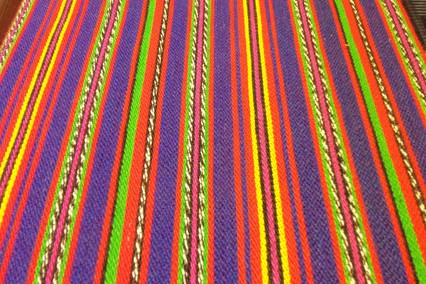Description
A weaver is responsible for setting up, operating, or tending machines that knit, loop, weave, or draw in textiles. Weavers produce fabrics-sample textiles, curtains, tablecloths, etc. on handlooms to transform a pattern into a sample piece, following technical specifications for the weave structure. To weave is to interlace two sets of threads. Today, rugs, table linens, wall hangings, and clothing are just some of the items that weavers create.
Tasks:
- Thread yarn, thread, and fabric through guides, needles, and rollers of machines for weaving, knitting, or other processing
- Notify supervisors or repair staff of mechanical malfunctions
- Inspect products to ensure that specifications are met and to determine if machines need adjustment
- Observe woven cloth to detect weaving defects
- Record information about work completed and machine settings
- Set up, or set up and operate textile machines that perform textile processing and manufacturing operations
- Inspect machinery to determine whether repairs are needed
- Remove defects in cloth by cutting and pulling out filling
- Adjust machine heating mechanisms, tensions, and speeds to produce specified products.
- Install, level, and align machine components such as gears, chains, guides, dies, cutters, and/or needles
- Wash and blend wool, yarn, or cloth
Key skills for weaver:
- Good analytical and organizational skills
- Effective team member
- Ability to communicate effectively
- Attention to detail
- Strong safety orientation
- Physical strength
Average salary (2013):
The United Kingdom: £400 per week
The United States of America: $26,000 per year
Australia: AU$ 1,000 per week
Qualifications and training required:
No post-secondary education is required for this type of job. To become a professional weaver a vocational secondary education is required. The duration of training is approximately 4 years, although it may vary. Also a weaver can take part in specialized courses organized by local industrial businesses, as well as learn from other weaving craftsmen.
Employees in these occupations need anywhere from a few months to one year of working with experienced employees in order to work independently. A recognized apprenticeship program may be associated with these occupations. Most businesses in this industry have some kind of apprenticeship or educational programmes for students and new employees.


